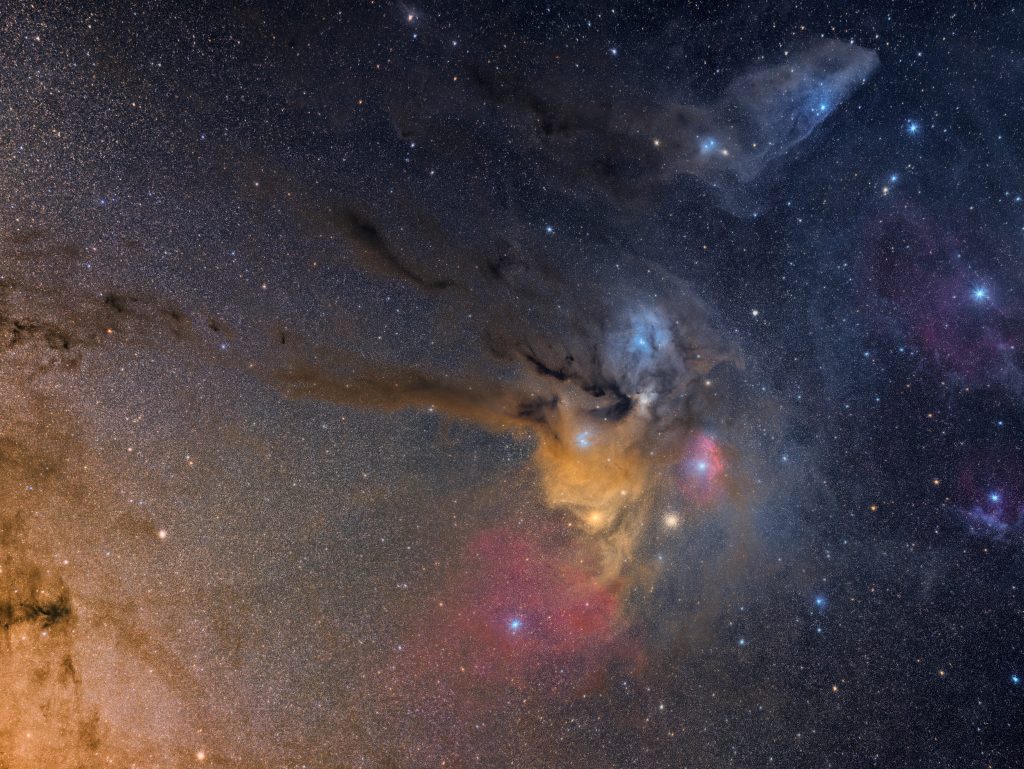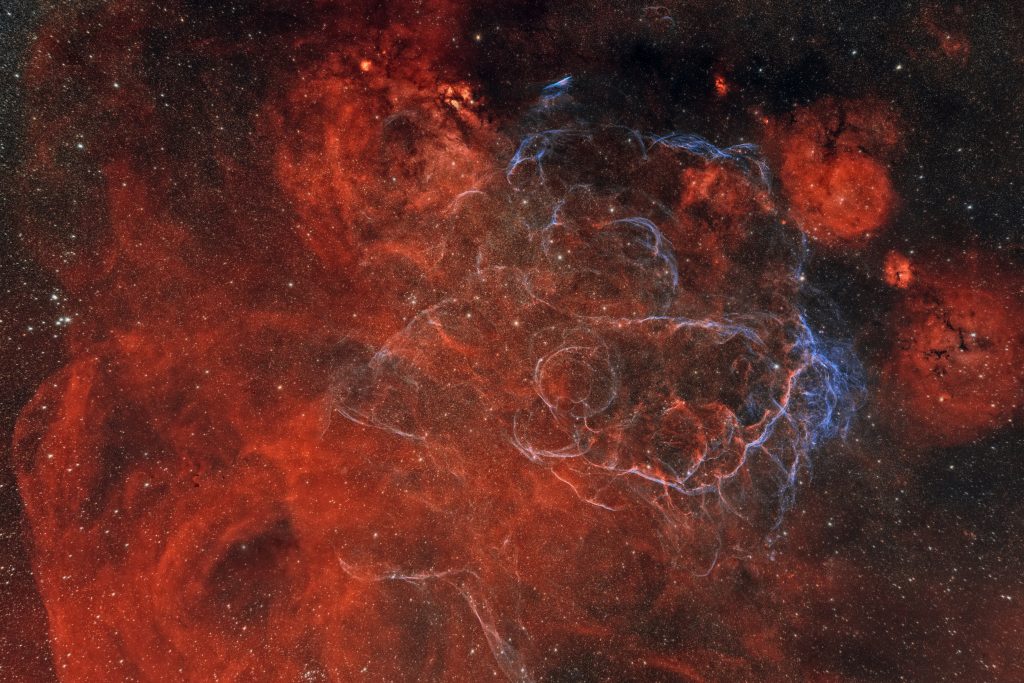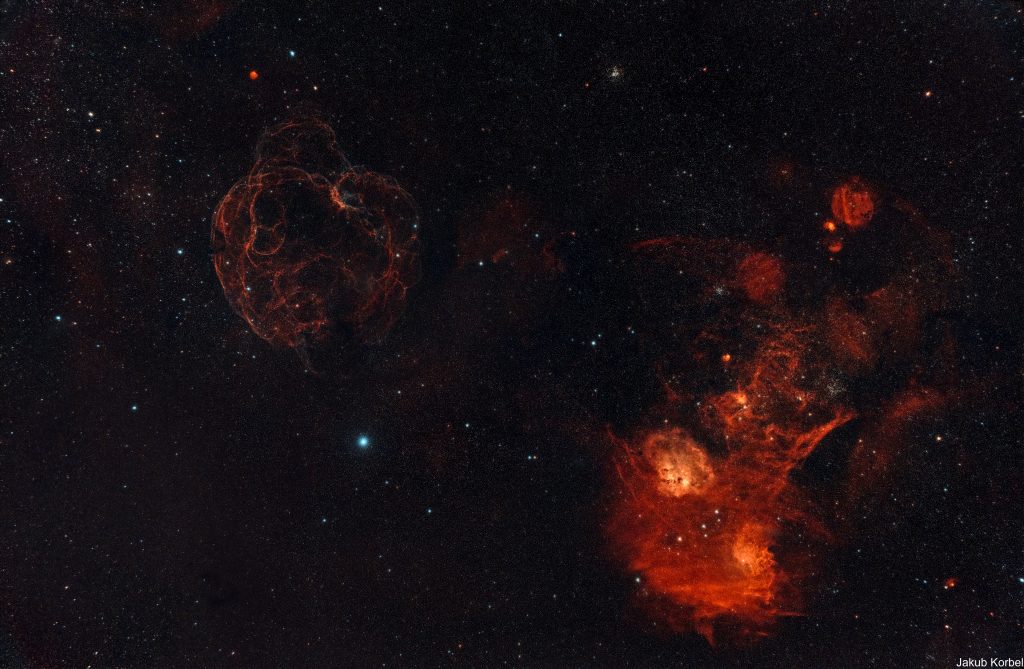The Rho Ophiuchi cloud complex orchestrates a stunning cosmic symphony, blending dark dust lanes, reflection nebulae, and young stars in a mesmerizing display. This celestial masterpiece unfolds approximately 460 light-years away, captivating observers with its intricate dance of stellar birth and evolution. Two notable celestial gems within the Rho Ophiuchi cloud complex are the Serpent Nebula (Barnard 59) and the Crown Nebula (IC 4592). The Serpent Nebula winds through dark dust lanes, while the Crown Nebula emits a soft celestial glow akin to a cosmic crown. These nebulae, along with their stellar companions, add a touch of enchantment to this cosmic masterpiece.
This deep-space object is surrounded by other space marvels. Specifically by the Blue Horsehead Nebula on the upper side, IC 4591 on the right side, and there is a galactic bulge on the left side.
This picture is a panorama of two frames. The initial plan was to continue toward the left into the Milky Way, but this plan was ruined by the weather, so it can be considered an unfinished project.

Technical details:
| Telescope | Samyang 135 mm F2 @f2.4 |
| Aperture | 67.5 mm |
| Focal length | 135 mm |
| Mount | iOptron Skyguider Pro |
| Autoguiding | ZWO 174MM, QHY Mini Guide Scope |
| Camera | ZWO 6200MC @-10°C |
| Filters | no |
| Exposure | 165x300s, Gain 100, bin 1×1, |
| Date | 2023-05-19 |


